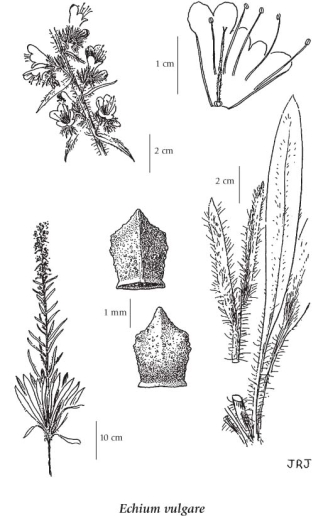Echium vulgare L.
viper's bugloss (blueweed; common viper's bugloss)
Boraginaceae (Borage family)
Introduction to Vascular Plants
viper's bugloss (blueweed; common viper's bugloss)
Boraginaceae (Borage family)
Introduction to Vascular Plants
© Larry Halverson (Photo ID #81468)
